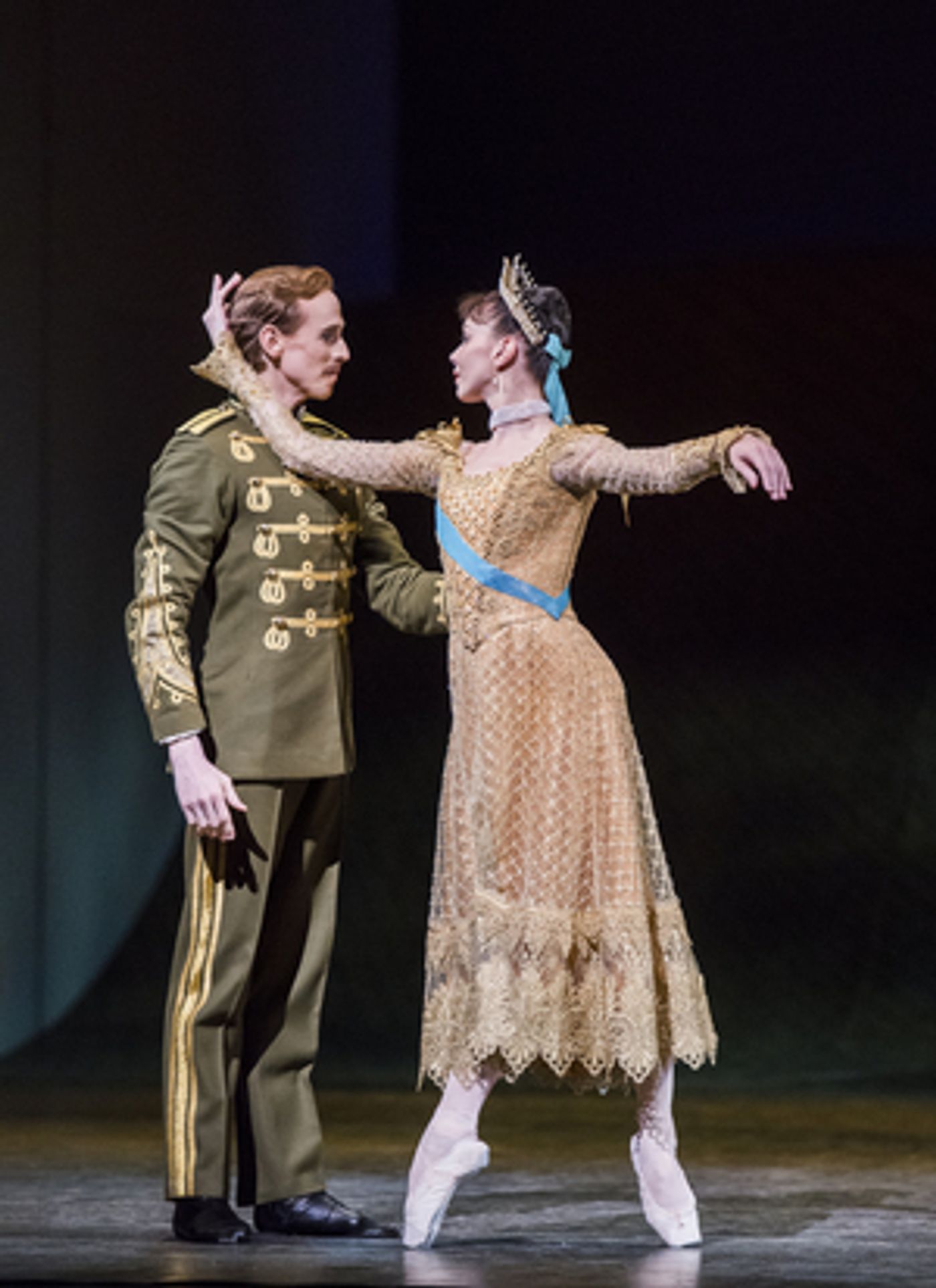Review: ANASTASIA, Royal Opera House

![]() The latest ballet to feature as part of the #OurHouseToYourHouse series is Kenneth Macmillan's Anastasia - the true story of Anna Anderson who claimed to be the youngest daughter of Tsar Nicholas II and the only survivor of the Russian royal family's assassination in 1918.
The latest ballet to feature as part of the #OurHouseToYourHouse series is Kenneth Macmillan's Anastasia - the true story of Anna Anderson who claimed to be the youngest daughter of Tsar Nicholas II and the only survivor of the Russian royal family's assassination in 1918.
Seen for the first time in 1971 as the three-act ballet audiences know it as today, it's a work that uniquely showcases Macmillan's dual influences: the classical style of the Royal Ballet seen in Acts One and Two, and the dark expressionism present in Act Three.
Of course, Anastasia the ballet started life in 1967 as a one-act work, the act that today forms Act Three. It was one of MacMillan's first endeavours as Artistic Director of the Royal Ballet to turn it into a full-length piece four years later.
Those who love MacMillan blockbusters such as Mayerling and Manon may, by his standards, find the first two acts fluffy and lacking action, but there is much to enjoy in the trot through the lives of regal Russian Duchesses and the like. There's the charming costuming and wafty dresses, the opulence of a society ball, the accompanying Tchaikovsky symphonies and the divertissement of - what would you know - a ballet performance to pass the otherwise rather bland but idyllic goings-on.
Bob Crowley's designs evoke Anastasia's distorted memories. Sumptuous chandeliers and glittering pools of water set the regal scenes, while the final act is clinical, dark and featureless except for the archive footage that flickers over a screen as staff attempt to force Anna/Anastasia's memories into place.
Russian Principal Natalia Osipova is a perfect choice for the title role, as one who understands the importance of Anastasia's story and fascination it holds. The meaty third act sees her fully living the mental anguish of the protagonist, her eyes wide from continued trauma as she fights her demons in an oversized hospital gown.
Conversely, in Acts One and Two she is a sprightly and curious teenager, her small frame convincingly portraying her as the younger sister of her considerably more majestic and distinguished sisters. They include now Principal Yasmine Naghdi, who it's interesting to see in a supporting role. There are also confident performances in this breezy opening act from Beatriz Stix-Brunell and Olivia Cowley.
Marianela Nunez and Federico Bonelli are the subjects of a disappointing interlude at Anastasia's debutante ball in Act Two. The pair dance a surprisingly stilted pas de deux that fails to show them off to their true power. Later, however, there is at least opportunity for Nunez's character to shine as the Tsar's mistress, her mischievous expressiveness adding layers of intrigue to this fragmented role as she dances in an tense pas de quatre with the Tsar, Tsarina Alexandra and Thiago Soares's knowing Rasputin.
Acts One and Two could be another, altogether more traditional standalone work. But Macmillan was intrigued by tortured souls like Anna/Anastasia, and the storytelling in the gloomy mental asylum that sees the ballet's conclusion is by far the most fast-paced and exciting.
As real-life footage of the Romanov family is projected, nurses watch her distress and take notes, eagle-eyed. When Anastasia spots who she believes to be her former self on screen, she breaks down. The memory of her entire family being shot dead in front of her is replayed, prompting a sharp, visceral scream. Her pain is endless, and MacMillan's movements demand a relentless physicality which she takes full ownership of. The final quiet moments depict Anastasia centre stage on her functional hospital bed, a lost soul. Characters who have come and gone from her life, seen in the past memory fragments, return to watch her motionless as the curtain lowers.
MacMillan's work did not originally go down well with the critics, and one can understand why. However, lovingly reworked by the Royal Ballet, it makes for a compelling watch, with initial scene-setting that traditionalists can enjoy too. Anastasia is unquestionably a ballet of two parts and somewhat of an oddity; not strictly history (as was later confirmed), certainly no fairy tale and not a love story, but a retelling of one woman's faith in her own identity.
Anastasia is available on YouTube until May 29 as part of #OurHouseToYourHouse
Reader Reviews
Videos

